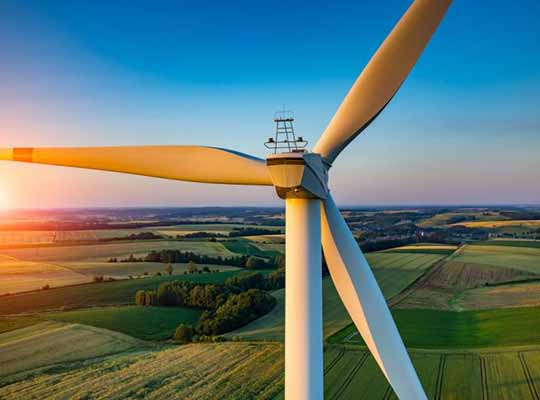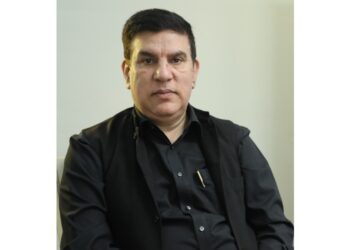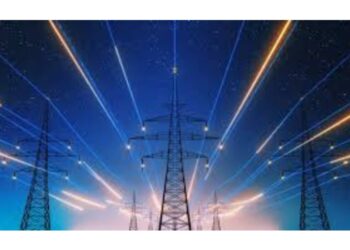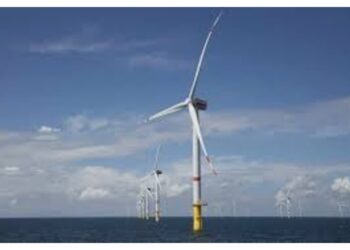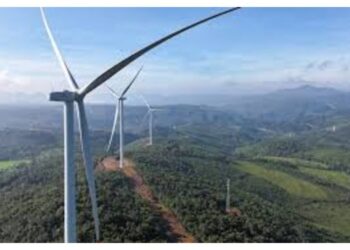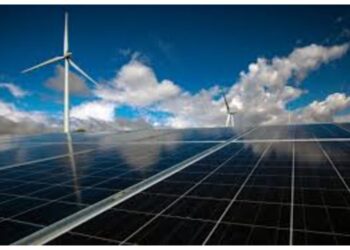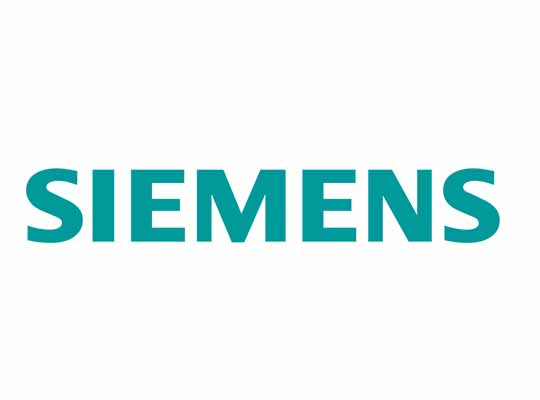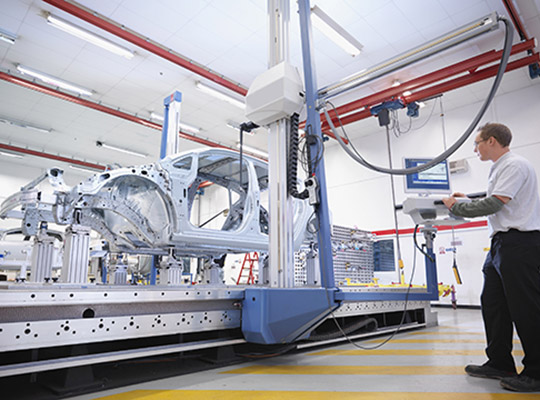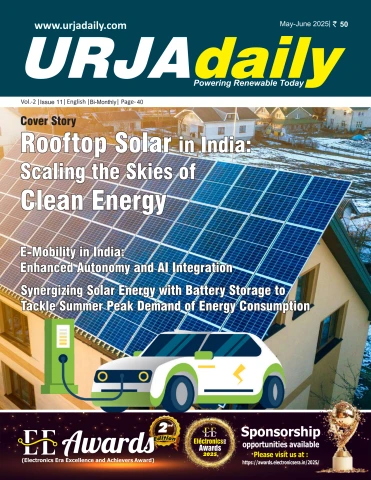Innovation has been driving the wind power market with its large, medium and small scale versions. With the growing demand and awareness towards renewable sources of energy various innovative approaches have been found to use the energy generated from renewable resources. In this direction, the wind turbines of today are continually and considerably improving from those first developed in the 80s and 90s. With innovations, wind turbines have become more cost-effective, more reliable and capable of much more power production. Today’s turbines are considerably larger with a greater power generation capacity which can be up to 12MW. Turbines make use of the wind’s energy with their propeller-like blades, which act much like an airplane wing. The wind turbine blades are the motor in a wind turbine which extract all the energy from the wind. When the wind blows, a pocket of low-pressure air forms on one side of the blade. The low-pressure air pocket then pulls the blade toward it, causing the rotor to turn. Thus. blades in a wind turbine are an important part which used to be very bulky in the beginning of wind turbine technology (Fig.1a) but along with time blades have been modified with innovations not only in design but also in material, science and technology of wind turbine technology towards making them light weight, economical, noise free, friction and corrosion free and producing more angular speed for same torque with low rotational inertia(Fig.1b). Wind turbine blades should be light as they are more efficient when they are lighter. It makes the wind turbines easier to assemble and disassemble while making them easier to turn, enhancing their performance. Having fewer blades reduces drag. The two-bladed turbines will wobble when they turn to face the wind. With the use of three blades in wind turbines, the angular momentum stays constant because when one blade is up, the other two are pointing at an angle, so the turbine can rotate into the wind smoothly.
Although the basic blade design hasn’t changed, designers and manufacturers have continued working on developing the world’s smallest to longest wind blades and finding the perfect balance between wind turbine blade design and their aerodynamics presents the greatest design challenge for each wind turbine blade length. Aerodynamic properties are crucial in determining how well a wind turbine blade can extract energy from the wind and efficiently produce wind power. Tried and tested building blocks are the basis for all of blade development projects. Creating new and reliable wind turbine blade designs by developing and testing the best materials for wind turbine blades is the current research. Proven wind turbine blade designs are helping with efficient and cost effective wind power generation. Optimized blade solutions are setting new standards for cost of energy and use of flexible building blocks is finding the optimal fit for the turbine. A detailed review of the current state-of-art for wind turbine blade design include maximum efficiency, propulsion, practical efficiency, blade design, and blade loads. The review provides a complete picture of wind turbine blade design and shows the dominance of modern turbines almost exclusive use of horizontal axis rotors. The use of aerodynamic design principles in modern wind turbine blades is proving very beneficial towards making efficient blades including blade plan shape/quantity, aerofoil selection and optimal attack angles. Detailed studies of design loads on wind turbine blades make use of describing aerodynamic, gravitational, centrifugal, gyroscopic and operational conditions.
New technology is helping to redefine wind turbine blades and blades are being fabricated using composite materials such as fiber-reinforced polymer composites, which include carbon, glass, or natural fibers. These materials often comprise up to 50% of the cost of a manufactured wind turbine blade. Materials generally being considered for the wind-turbine blade market include resins of glass fiber reinforced polyester, glass fiber reinforced epoxy, and carbon fiber reinforced epoxy. Further, the combination of glass fibers with a resin matrix results in composites that are strong, lightweight, corrosion-resistant, and dimensionally stable. Based on modular technology featuring modular aerodynamics, modular structure and modular manufacturing tooling can deliver customized blades in mixes of length and structure for different capacity wind turbines and extend their life cycles to perform under varying conditions of wind, temperature and humidity. In the wind turbine blade manufacturing process, blades have to be tested to their limits, and to be continuously improved with the latest, innovative wind turbine blade materials.
Theoretically, an infinite number of blades of zero width is the most efficient, operating at a high value of the tip speed ratio but other scientific and engineering considerations always lead to a compromise for having a wind turbine with only a few blades. Component costs that are affected by blade count are primarily the reason along with the need for materials and manufacturing of the turbine rotor and drive train. It is well known that lower the number of blades, the lower will be the material and manufacturing costs. In addition, with the lower the number of blades, the rotational speed can be higher. The blade stiffness requirements to avoid interference with the tower limit need thin blades. Fewer blades with higher rotational speeds also reduce peak torques in the drive train thus resulting in lower gearbox and generator costs. In addition to all these technicalities, aesthetics can also be considered a factor in that some people find that the three-bladed rotor is more pleasing to look at than a one- or two-bladed rotor.
To reduce converting energy costs and optimizing energy production, researchers from various research organizations, companies and institutions are working together to design not only innovative wind turbines but also the blades. With larger blades, more kinetic energy from the wind can be harnessed and used to generate electricity. However, transportation and manufacturing costs will rise in response to increased material mass and demand. Researchers and engineers are trying to find ways to decrease the stiffness of the blades and for the turbine to hold more upcoming wind, regardless of speed. Changing the shape of traditional turbine blades has resulted in the development of lighter blades. This approach allows for aeroelastic stability, but at the cost of increased complexity for manufacturing and control. Researchers are currently working on designing lighter blades and optimizing spar cap placements on the blades without increasing the thickness. This would minimize blade mass and increase the strength.
As the technology matures, advancements are on the horizon that will extend wind project lifespan whilst simultaneously lowering the operational costs. Some of the main areas of innovation in wind turbine blades are:
- Longer and lighter rotor blades – with some reaching 95 metres long.
- Blades with curved tips that are designed to take maximum advantage of all wind speeds.
- Blades that are better able to withstand the stresses of high-altitude wind and taller towers.


